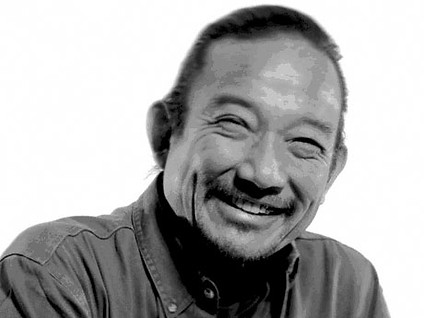steven kuromiya
Steven Kiyoshi Kuromiya, was a Sansei, a third generation Japanese American. His grandfather had been a truck farmer in Monrovia and Arcadia. His Uncle Yosh was a draft resister during World War II, a way to protest the unjust internment of all Japanese Americans. Kiyoshi was conceived in Monrovia but born in a Wyoming internment camp in 1943. The family returned to Monrovia in 1946. After the war, Kiyoshi’s father, Hiroshi, worked in produce and Kiyoshi graduated with honors from Monrovia High School in 1961.
After high school, Steven was admitted to several universities and went on scholarship to the University of Pennsylvania just as the 1960s civil rights movement was at its height. He joined Students for a Democratic Society (SDS) and SNCC (Student Nonviolent Coordinating Committee). In March of 1965, Kiyoshi was one of a handful of Asian Americans fighting for African American voting rights in Selma. Kuromiya was leading a high school student group to the State Capitol in Montgomery when he was brutally clubbed by Alabama state troopers on 16 March 1965.

Peter Cummings reported on 24 March 1965 in The Harvard Crimson,"Within seconds, the quiet streets were filled with screams. The horses rode straight into the crowds on both sides of the street… One boy, Steven K. Kuromiya, an architectural student at the University of Pennsylvania, held his ground. Four horsemen converged on him, clubbed him to the ground, and rode over him. Curled in a fetal position, Kuromiy[a] tried to cover his head with his arms as unmounted deputies clubbed him, and kicked him in stomach and groin. Finally, they left him, as blood streamed in glistening lines across his face and formed a scarlet pool on the sidewalk.”
Kiyoshi is quoted to say, "When you get treated this way, you suddenly know what it is like to be a Black in Mississippi or a peasant in Vietnam. You learn something about going through channels then too. I gave my story to an FBI agent in the hospital. He took seven pages of notes, but I remember thinking at the time it was probably just about as effective as relaying information to the ACLU via the House Un-American Activities Committee. Nothing ever came of it, at any rate." However, records show that FBI monitored Kiyoshi Kuromiya from 1960 to 1972. Kuromiya became close to Dr. Martin Luther King, Jr., and during the week of King's funeral, Kiyoshi helped to care for the King children in Vine City.
Kiyoshi’s 93-year old Uncle Yosh reflected, “I’ve always felt good about Kiyoshi. I couldn’t pretend to understand Kiyoshi’s commitment but I sensed a camaraderie with him… I remember Kiyoshi would comment on the irony that he was conceived in Monrovia, born in Wyoming, and although the West Coast was considered cosmopolitan and liberal, he sensed that there was no room for him here. He felt exiled from Monrovia. He felt he was exiled even before he was born. No wonder he was dedicated to civil rights.”
Kiyoshi was involved in the gay rights rallies by the early 1960s. After the 1969 Stonewall Riots in New York City, Kiyoshi helped launch the multiracial Gay Liberation Front (GLF) in Philadelphia. In 1988, Kiyoshi was a charter member of Philadelphia’s ACT UP, AIDS Coalition to Unleash Power. At about the same time, he founded Critical Path Projectin Philadelphia. With the mantra “knowledge is power,” Critical Path established an online clearinghouse for AIDS patients and researchers worldwide. Both of these organizations continue to bring awareness and solution paths to the AIDS/HIV pandemic.
Kiyoshi took one further step to help people with HIV/AIDS; he was lead plaintiff in Kuromiya v the United States of America(1999), a class action suit in the U.S. Supreme Court to legalize the use of medical marijuana. Kiyoshi said that it was at Monrovia High that he came to realize that “even more important than my racial identity was my gayness." As a Japanese American, he had rocks thrown at him on the way to grade school. He said that when he was11 years old, he was caught by the Monrovia Police with a 16-year old boy. Kuromiya was sent to juvenile hall for three days and gained notoriety as a young Japanese American in jail. Kuromiya said the judge “told me [and my parents] that I was in danger of leading a lewd and immoral life… I spent two years trying to find a definition for the word ‘lewd’, but I couldn’t figure out how it was spelled, so I was in the dark as to what my future held for me.”
Kiyoshi Kuromiya was a man of many talents. He was a nationally ranked Scrabble player and a Kundalini yoga master. He maintained interest in architecture and Asian American issues. He was also a food critic. He worked with futurist R. Buckminster Fuller on the book, Critical Path(1982), published after Fuller’s death.
Written by Susie Ling




